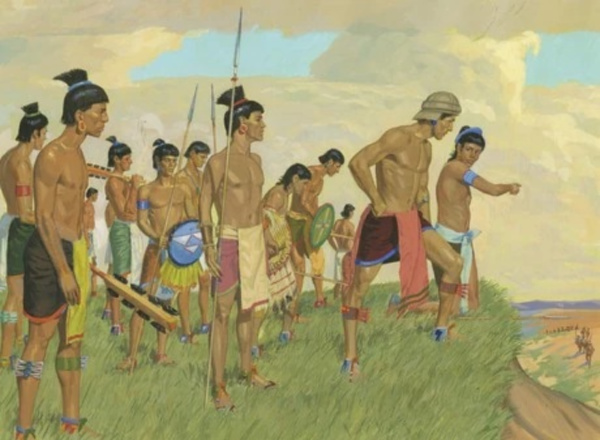
What is a Lamanite?
Question
Gramps,
I heard there were three classifications of Lamanites: Native Americans, Polynesians, and Latinos/Hispanics. Are they considered Lamanites? Probably not all of those people are descended from Book of Mormon people. Are they considered to be Lamanites? I recently found out I am nearly a quarter Native American, and possibly there is a trace of Polynesian. Am I a Lamanite?
Shasta
Shasta,
The Book of Mormon describes the Lamanites as descendants of Laman, the elder son of Lehi, who left Jerusalem around 600 B.C. with his family. According to the text, the Lamanites were often in conflict with the Nephites, descendants of Lehi’s other son, Nephi. The narrative portrays the Lamanites as a people who rejected the teachings of their father and became adversaries of the Nephites, leading to a long history of warfare and cultural division.
Historically, early members of the Church believed that the Lamanites were the principal ancestors of the American Indians. This belief was reflected in the 1981 version of the Book of Mormon’s introduction, which described the Lamanites as “the principal ancestors of the American Indians. However, this assertion has been revised in more recent editions, which now state that the Lamanites are “among the ancestors of the American Indians. This change reflects a growing recognition of the complexity of Native American ancestry and the need for a more nuanced understanding of the Lamanites’ role in that history.
The shift in the Church’s narrative regarding Lamanite ancestry is not merely a matter of semantics; it represents a broader evolution in the understanding of identity and ancestry within the context of the Book of Mormon. Scholars within the Church have long debated the implications of DNA research on the historical claims made in the Book of Mormon. For instance, some have argued for a “limited geography” model, suggesting that the events described in the Book of Mormon occurred in a specific region of the Americas, rather than across the entire continent. This perspective allows for the possibility that other populations existed alongside Lehi’s descendants, complicating the notion of a singular Lamanite ancestry.
Modern genetic research has posed significant challenges to the traditional understanding of Lamanite ancestry. Studies have shown that there are no known genetic markers in Native American populations that connect them to people from the Middle East, where Lehi and his family originated. This raises the question: if the Lamanites were indeed a significant ancestral group, why is there no detectable DNA evidence linking them to contemporary Native Americans?
To read the entire article: askgramps.org









